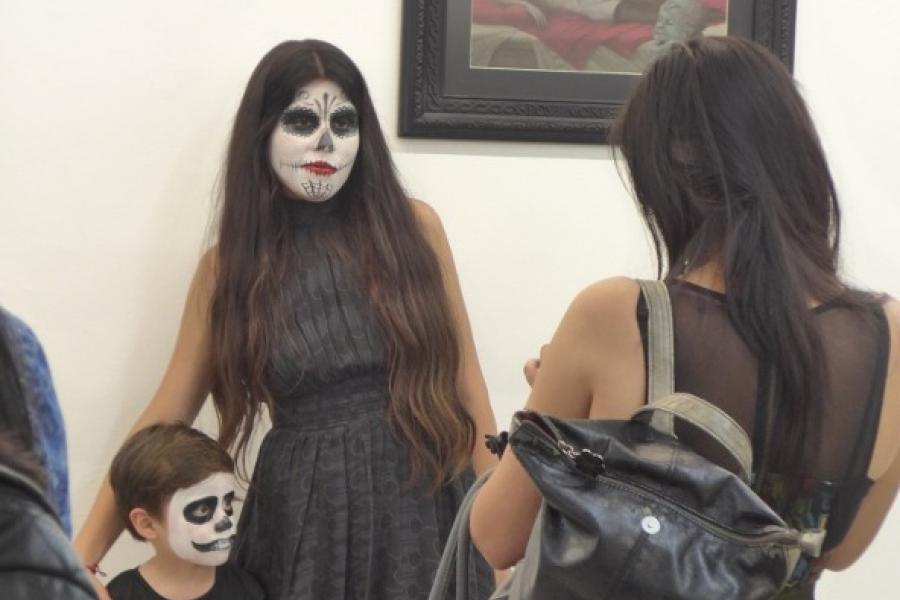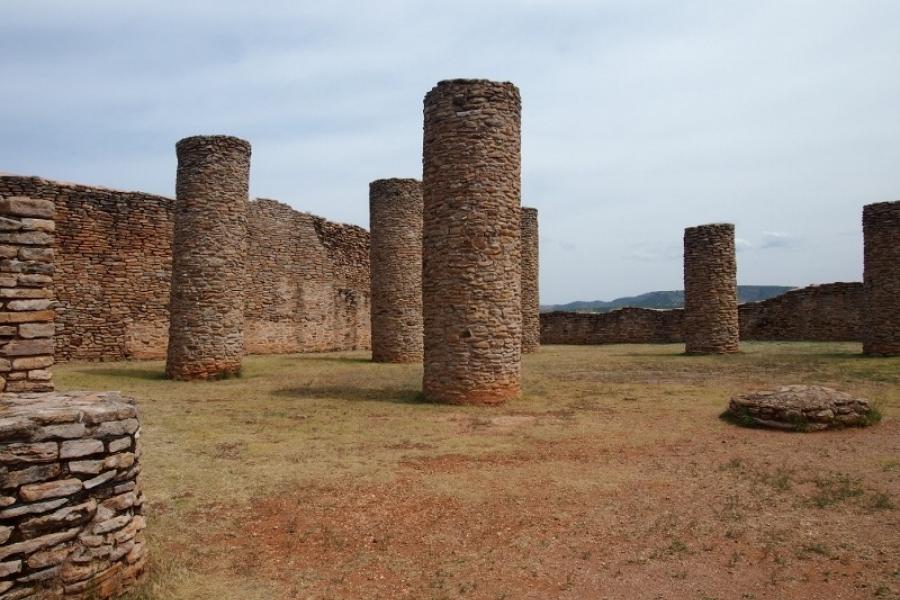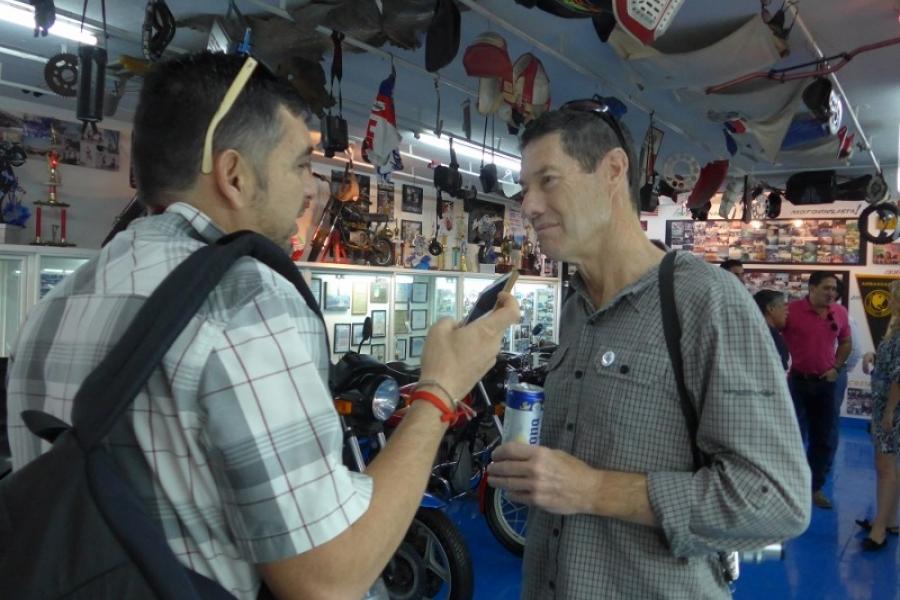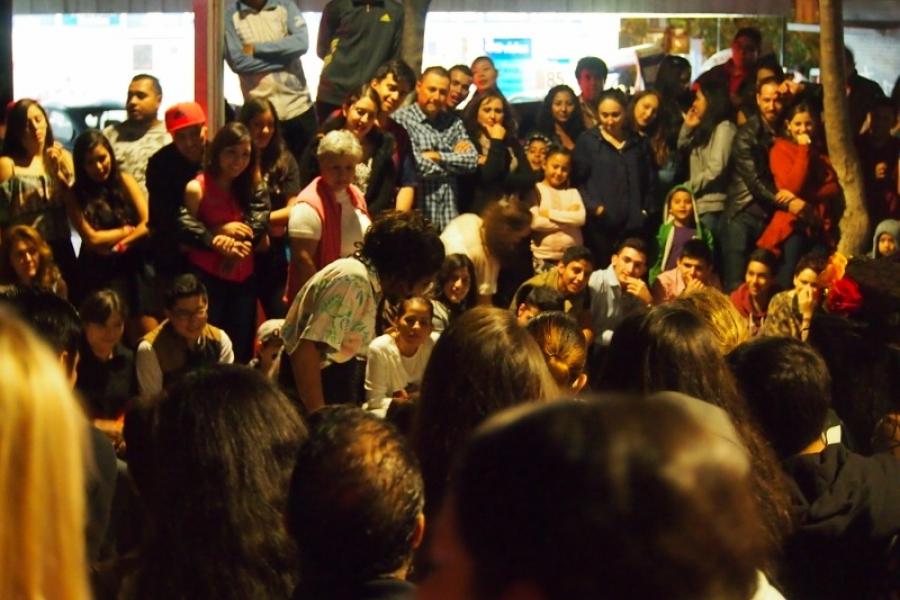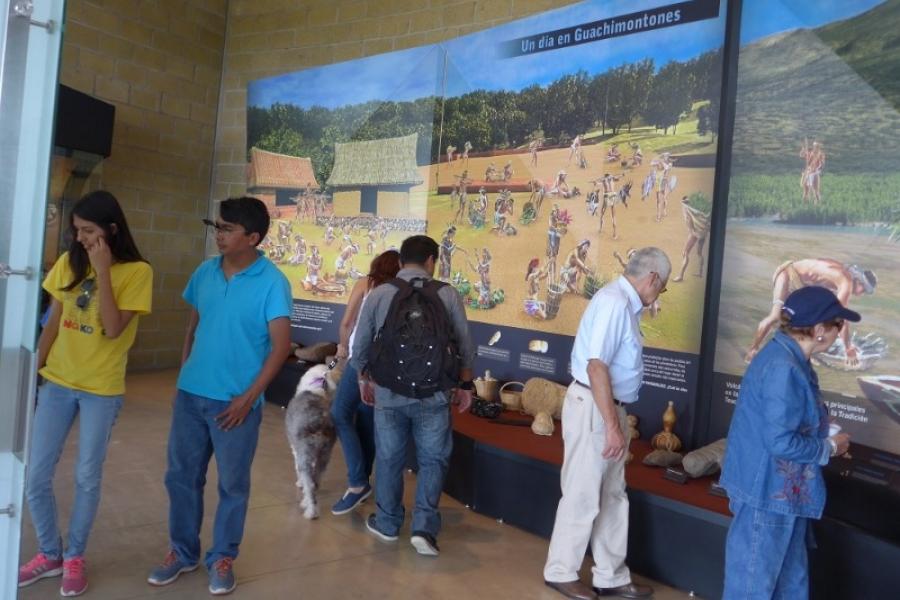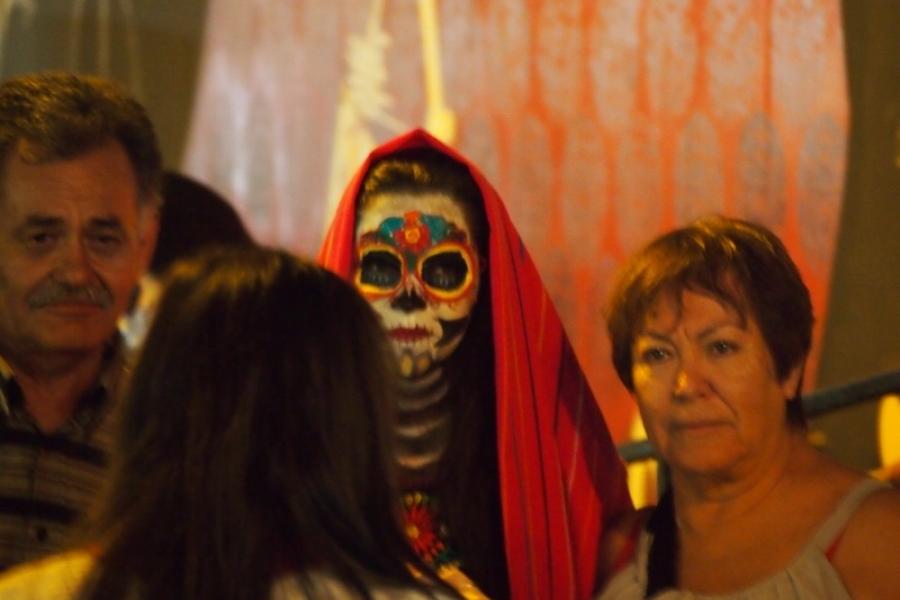Painted faced in the crowd (Originally posted 3 Nov 2015)
Country
If we limped into Guadalajara with our spirits a little tested the feeling didn't last for long. Our friends Ernesto and Andrea and their children Diego and Luna welcomed us as family. Ernesto had already identified the only "real" suspension specialist in town and it didn't take long to book Elephant in for repairs with our only concern a few days waiting for spares. If I had been looking forward to a few days relaxing, however, I was shocked into reality the next day when Ernesto and I joined the Sales Manager for the Guadalajara Honda dealer on a little test ride of new bikes.
When I say little, I mean 700 km over 13 hours! We rode north almost all the way back to the city of Zacatecas to visit the Mesoamerican ruins at La Quemada Zona Arqueológica. There is a longer story about how this happy event came to be which some of our BMW Club friends will hear about later but, whatever the catalyst, the chance to test a couple of amazing new bikes and have a few hours almost alone at a pre-Spanish site was an experience not to be missed. We stayed on in Guadalajara for the remainder of the week which gave us a chance to visit a second Mesoamerican site at Guachimontones. Elephant was finally fixed and returned but we elected to stay on for a second week just because we could and because there was so much to do around Guadalajara.
Our extended stay allowed us to experience Día de los Muertos (Day of the Dead) celebrations with a Mexican family. In some parts of the Anglo-sphere, Halloween is a faint echo of this celebration but in Mexico, the Day of the Dead is an important day and a lasting echo of Mexico's pre-Spanish past loaded with cultural and political meaning. In pre-Spanish Mexico, the observance started in early August and lasted for almost a month. The festivities were for the goddess known as the "Lady of the Dead" and reflected respect for ancestors. With the arrival of the Spanish, the date of festivities was moved to align with the Christian calendar, but its basic theme of connecting with the dead remained. The Aztec goddess Mictecacihuatl was eventually replaced with the image called La Calavera Catrina which has become the modern image of the Day of the Dead and Halloween.
Even the image of Catrina is loaded with meaning in Mexico. It was originally made by the lithographer José Guadalupe Posada as a political satire on those aristocratic Mexicans who were profiting from the reign of the dictator Porfirio Díaz and who aped upper class Europeans. The contrast of the hat, in a style then popular with European elites, and the skeletal body was interpreted as symbolizing the gap between the exploiters and the exploited. In small villages and towns the celebrations remain very traditional with processions to the cemetery and offerings of flowers, corn, food and drink. There are few Catrinas to be seen. In a big, modern and sophisticated city like Guadalajara, however, it takes on a different and decidedly more carnival feel. On Halloween (All Saints' Day Eve), thousands of people gather in the city dressed in costume and decorated as Catrinas, or similar fantastic characters, and there is a grand procession through the city. This is, of course, followed by a fiesta, but everything in Mexico seems to be a reason for a fiesta.
On the Day of the Dead (the Christian All Souls' Day) families visit and decorate the graves of relatives or gather around small shrines they have made at home and decorated with personal remembrances of the deceased. Familial anecdotes are related to the young and the many good characteristics and achievements of the dead are fondly remembered. The decorations and stories are deeply personal for this part is, at its heart, for and about family.
Somewhere, in the middle of all this, we visited the Museo Motorrad Federación México at the invitation of Ernesto in his role as President of the Motorrad Federation of Mexico. This worthy museum, complete with a fine selection of 60 Series BMWs, is the work of Salvador (“Chavita”) Herrera Avila. “Chavita” has built the museum largely at his own cost and provided the bikers of Guadalajara with a place to capture a rich history. Unbeknown to us, Ernesto had organised for a small posse of motorcycle folk to be there and for the Federation to issue Jo and I with official ID cards identifying us as two of its International Ambassadors. It is a role we were delighted and humbled to accept.
Our visits to Guachimontones and La Quemada and our gradual realisation that Halloween did mean something more that kids eating candy has reinforced our respect for Mexico’s long history and living culture. Everywhere we have been the pre-Spanish world has been waiting patiently for us to find it. Sometimes it has been in monuments of stone but more often in stories and ritual and attitudes. Sometimes it appears in the little things we hear. This, for example, is a little Mexican story:
We had the land,
They had the bible.
They told us to close our eyes and pray.
When we opened our eyes we had the bible,
And they had the land.
And so it goes.
We still have a few things to do around Guadalajara. The most important is to visit one of the distilleries in the town of Tequila where they make... well, you can figure that one out.



